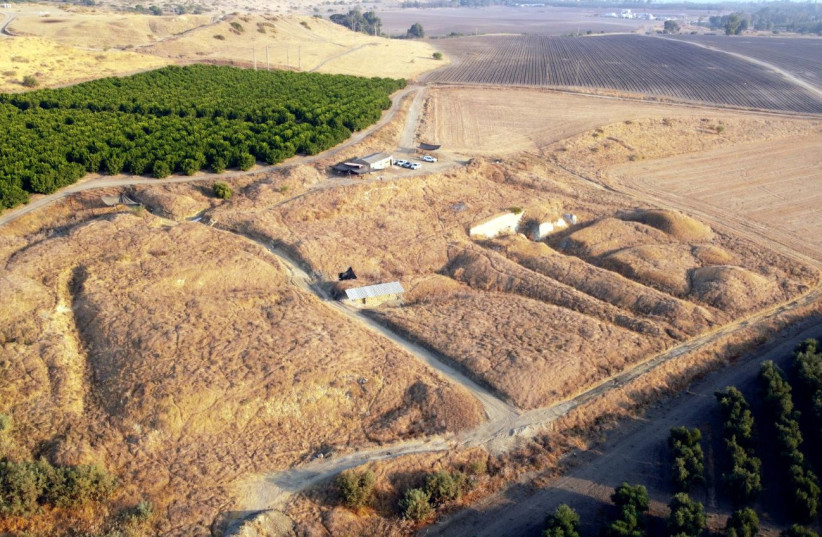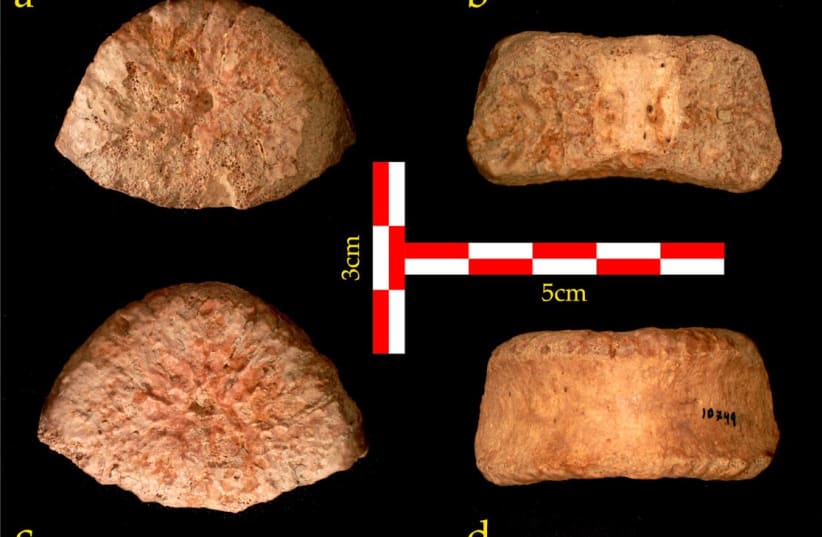A small 1.5-million-year-old bone discovered in the Jordan Valley in Israel has provided researchers with evidence for the first time of multiple migration waves of ancient humans from Africa, according to findings published on Wednesday.
The bone was originally discovered in 1966, but recent excavations at the site using new technology have allowed for new dating of the findings. It is the most ancient proof of human life in Israel ever discovered.
The research, led by Dr. Alon Barash of Bar-Ilan University’s Azrieli Faculty of Medicine, Prof. Ella Been of Ono Academic College, Prof. Miriam Belmaker of the University of Tulsa, and Dr. Omry Barzilai of the Israel Antiquities Authority used the prehistoric human vertebra to confirm that ancient human migration from Africa to Eurasia was not a one-time event but occurred in waves by different species.
There is an ongoing debate about how the migration out of Africa took place. One approach believes that there was only one migration wave, while the other school of thought maintains that there were several migrations.
By comparing the vertebra from the Ubeidiya excavation site in the Jordan Valley to bones of fossils from the prehistoric Dmanisi site in the Republic of Georgia – the oldest prehistoric site in the world – the researchers were able to determine that the sites were inhabited by two different ancient humans.


“We were able to compare them to what we have from Ubeidiya and... they look completely different, which means they are not the same species – which means there were at least two migration waves during the same time period,” said Barash. “We have established that there was more than one migration wave out of Africa, and this is the first time we have the bones to back up this theory.”
The vertebra, which belonged to a child between six and 12 years old, is the earliest evidence of ancient humans discovered in Israel.
Barash said that it is very similar to vertebrae of the classic Homo erectus from Africa, while the remains from Dmanisi, though still under debate, look like an earlier form of H. erectus or H. habilis.
According to fossil evidence and DNA research, human evolution began in Africa about six million years ago. Approximately two million years ago, ancient humans began to migrate from Africa and spread throughout Eurasia, known as the “Out of Africa” process. Ubeidiya, located in the Jordan Valley near Kibbutz Beit Zera, is one of the places where we have archaeological evidence for this dispersal.
The prehistoric site of Ubeidiya is significant for archaeological and evolutionary studies, because it is one of the few places that contain preserved remnants of the early human exodus from Africa. The site, the second-oldest archaeological site outside Africa, was excavated by several archaeologists between 1960 and 1999.
The finds from the site include a rare collection of extinct animal bones and stone artifacts. Fossil species include saber-toothed tigers, mammoths and a giant buffalo, alongside animals not found today in Israel such as baboons, warthogs, hippopotamuses, giraffes and jaguars. Stone and flint items made and used by ancient humans show resemblance to those discovered at sites in East Africa.
EXCAVATIONS IN Ubeidiya were recently resumed by Belmaker and Barzilai with a grant Belmaker received from the US National Science Foundation. The project uses new absolute dating methods to refine the site’s dating and to study the paleoecology and paleoclimate of the region.
While looking through finds from previous excavations now housed at the Hebrew University’s National Natural History Collections, Belmaker, a paleoanthropologist from the University of Tulsa’s Department of Anthropology, by chance came across the human vertebra that had been stored in a box labeled: “human??” She contacted her colleague Barash to examine the bone.
“I looked at the bone and said this is something that walked on two legs,” said Barash. “I know this because of the shape of the bone. This is the oldest human bone found in Israel, and it is really amazing that it was excavated in 1966, and somebody wrote on the box ‘human’ with a question mark and just left it there. Usually in excavation you want a skeleton or a skull – something very dramatic – so someone found this vertebra and just left it there.”
He identified the bone as a human lumbar vertebra, and though it belonged to a young child, he or she would have been quite tall for the estimated age. Had the child grown to be an adult, the child would have reached a height of over 180 cm. This would be a similar height to some Homo erectus species from Africa, Barash said.
Research on stone tools at the site such as hand axes made from basalt, chopping tools and flakes made from flint have been associated with the Early Acheulean culture, said Barzilai, while those from Dmanisi were from the Oldowan culture. With this new study, researchers were able to conclude that different human species produced the two industries.
“In prehistory, usually you find stone tools but no human remains and you can only guess about who the makers were, knowing that there were many species back in that time,” said Barzilai, head of the archaeological research department of the IAA. He began new excavations at the site with Belmaker last year. “But with the re-discovery of the vertebra, we can connect the society to the large body Acheulean culture. At the Ubeidiya site, we now have both tools and fossil remains, giving us another piece of the puzzle for understanding the early migration of the early human species.”
Belmaker said that one of the main questions regarding the human dispersal from Africa is the ecological conditions that may have facilitated the dispersal. Previous theories debated whether early humans preferred an African savanna or a new, more humid woodland habitat.
“Our new finding of different human species in Dmanisi and Ubeidiya is consistent with our finding that climates also differed between the two sites,” she said. “Ubeidiya is more humid and compatible with a Mediterranean climate, while Dmanisi is drier with savannah habitat. This study showing two species, each producing a different stone tool culture, is supported by the fact that each population preferred a different environment.”
With the combination of material evidence at the site, researchers are also able to conclude that the ancient humans who inhabited it were quite intelligent, used a variety of tools, and knew how to use the environment for their needs there, which at that time was located at the southern shore of the Sea of Galilee along the Syrian-African rift, according to Prof. Ella Been, head of the sports therapy department at Ono Academic College and a specialist in paleoanthropology and anatomy.
“This one little vertebra tells us a new and interesting story, and proves something people had already raised the idea about: that there might have been [more] ‘Out of Africa’ events,” said Been. “Now we have proof of several out of Africa events: one of the small hominis and one the tall hominis. It is very exciting. We treat these bones with a lot of respect – it is like holding history in your hands.”
Barash said questions still remain to be answered: why did ancient humans migrate out of Africa? Did they come into contact with other humans? What was their interaction?
“We used to think of evolution as very subtle changes along the way, but that is not true,” he said. “It is much more complicated. We don’t have the entire picture. We still have a lot to discover. It is curiosity that drives us. Now we have opened a small window of light of what happened when we migrated out of Africa.”
